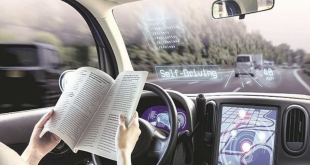On-Board Diagnostics – a day-to-day activity for professionals but a novelty to beginners. With the development of automotive software, daily drivers are becoming more interested in performing DIY diagnostics as the market has become saturated with different OBD2 scanners. But what do we actually know about OBD2 diagnostics, and why have OBD2 scanners become so widespread in recent years? Let’s quickly dive into the basics and cover the main key points.
What Is the OBD2 System and How Does It Work?
OBD2 diagnostics (On-Board Diagnostics Second Generation) is the latest diagnostic standard introduced in the late 90s. OBD2 systems use digital communication to access control units via the vehicle diagnostic port, better known as the OBD2 port, which can usually be found under the dashboard, right under the steering wheel.
Once a diagnostic tool is connected to a vehicle, it then uses the OBD2 system to scan different car components. The transmitted data then shows different standardized DTCs (diagnostic trouble codes), which make It easier to identify specific problems by relaying specific trouble code information.
Why Is It Important for Modern Cars?
OBD2 diagnostics do more than vehicle maintenance and repair. By becoming something that daily drivers can perform on their own, it fosters a transparent and efficient relationship between vehicle owners, technicians, and regulatory bodies – especially when new car models have improved software. OBD2 ensures that vehicles operate within the defined performance and emission standards. This promotes road safety, environmental protection, and consumer confidence.
Diagnostic tools have also vastly improved in terms of their compatibility and features. Various scanning tools are available that plug into the OBD connector to access OBD functions. Some are very advanced, heavy, and expensive, while others are more beginner-friendly. They can be sorted into PC-based scan tools, analysis platforms, and even hand-held or mobile device-based tools. These are the most easy to use, but be careful before buying. Make sure to research what features these devices can offer for your car. Some are basic OBD2 readers, others offer extensive features, like car coding and easy car feature customizations from smartphones via dedicated mobile apps. If that sounds like something you’d prefer, take a look at OBDeleven, maybe it’s what you’re looking for.
Benefits of OBD2 Diagnostics
- Enhanced troubleshooting – ability to real-time data on vehicle performance, making it easier to identify problems, leading to faster, more accurate troubleshooting.
- Cost and time efficiency – no more trial-and-error repairs. OBD2 diagnostics minimize the time and cost of fixing automotive issues by pinpointing exact issues.
- Emission control – by detecting emission-related problems and triggering warning indicators, OBD2 helps ensure compliance with environmental regulations.
- Preventive maintenance – regular diagnosing allows to identify potential issues earlier which in turns prevent those issues from becoming major problems.
Wrapping up
OBD2 diagnostics have changed the way we diagnose and understand vehicle issues. That’s why OBD2 scanners have become an essential tool in most drivers’ glove compartments. And as technology continues to advance, we can expect even more advanced and user-friendly OBD2 scanners to become available to professionals and everyday drivers.
 Automotive Blog Automotive Blog brings you the latest news, car reviews and information on the automotive industry.
Automotive Blog Automotive Blog brings you the latest news, car reviews and information on the automotive industry.




